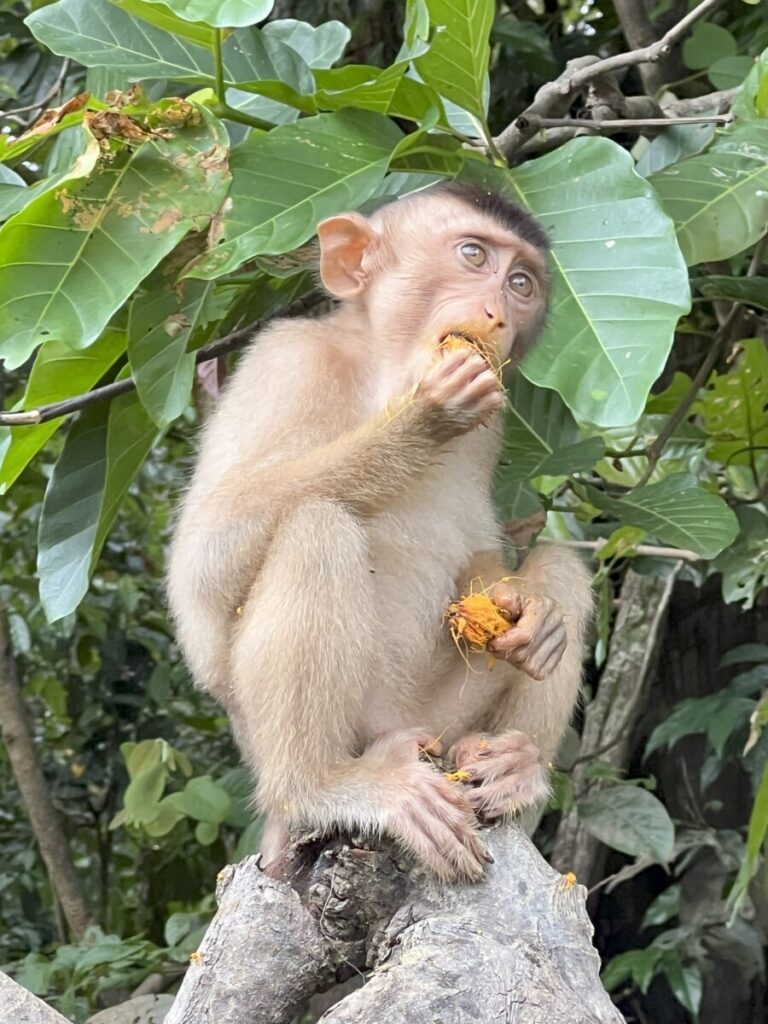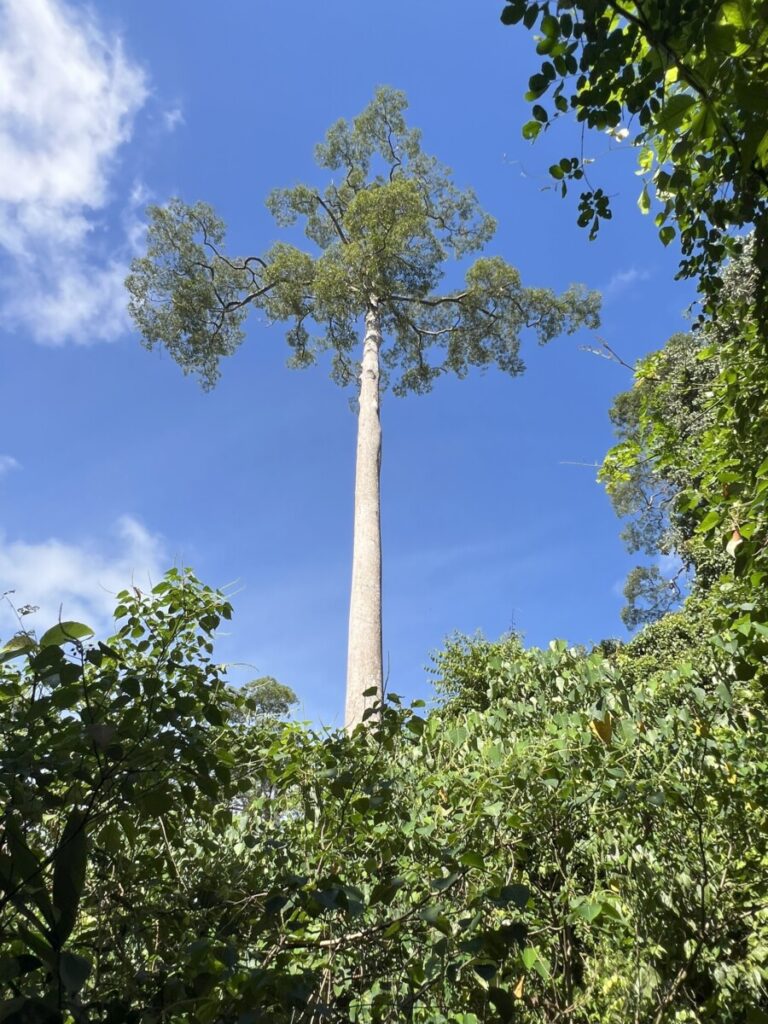Andrew Birrell is a Vegetation Operations Inspector for PG&E, a board-certified Master Arborist, and a proud IBEW 1245 grass-roots member. Based at the Geyserville Service Center, he’s spent years making tough calls about trees — when to prune, when to preserve, and when removal is the safest option. His work blends science, environmental stewardship, and public safety and plays a key role in PG&E’s efforts to be a sustainability leader in the utility industry.
Earlier this summer, Birrell traded the familiar California hillsides for the Island  of Borneo which is home to one of the oldest and most biodiverse rainforests on Earth, southeast of the Malay Peninsula and southwest of the Philippines.
of Borneo which is home to one of the oldest and most biodiverse rainforests on Earth, southeast of the Malay Peninsula and southwest of the Philippines.
Borneo’s rainforests are an ecological treasure, estimated at 131 million years old and home to thousands of plant species and rare wildlife, from orangutans to clouded leopards.

Nearly 11,000 species of flowering plants grow on Borneo — about a third found nowhere else on Earth. In a single hectare patch of lowland forest, scientists have recorded over 700 tree species. That’s as many as in all of North America.
But this ancient canopy is disappearing fast. In the last 50 years, Borneo has lost more than half its rainforest to deforestation and widespread oil palm expansion. From the air, the endless green has been carved up into neat rows of oil palm as well as dusty roads, all with increased vulnerability of wildfires that can burn deep into carbon-rich peat soils.
“Borneo is awe-inspiring and heartbreaking at the same time,” Birrell said as he described the sheer scale of what’s been lost to large-scale development, changing land use, and the palm oil industry.
For Birrell, the parallels between Borneo and California are clear. In both places, trees are vital to life. They anchor ecosystems, support wildlife, sustain communities, cool the planet, purify the air, and store vast amounts of carbon. Ironically, the same climate change that heightens the importance of these trees is also intensifying wildfires. Vegetation management practices, like trimming or removing trees, which are intended to reduce fire risks, can inadvertently release stored carbon and further impact the climate. This makes PG&E’s leadership in sustainable vegetation management, and Birrell’s role in it, even more critical.
Birrell’s expertise comes from decades in the field and formal training. He earned his Master Arborist credential through the International Society of Arboriculture, and he’s not done learning. The trip was part of a two-week program through his advanced coursework in forestry and environmental management.
Vegetation management is no longer just routine maintenance. It’s a critical part of adapting to a changing climate. IBEW 1245 Business Manager Bob Dean put it this way: “Our vegetation management crews are on the front lines of what’s ahead,” Dean said. “They’re already dealing with hotter summers, shifting weather patterns, and growing demand on the grid. The work they’re doing today is helping to preserve our communities and our planet for the future.”
Looking ahead, Birrell sees several keys to improving the work: expanding the use of remote sensing to pinpoint risks, consistent, high-quality training, and improving efficiency in the field. He notes that while the past four years have brought relatively favorable weather, California’s decade-long drought before that is a reminder of how quickly conditions can change. On top of that, last year brought the highest number of extreme-heat days on record, and the rapid growth of AI data centers is pushing electricity demand to new highs.
“I love my job,” Birrell said. “It’s a chance to protect the planet, keep people safe, and advocate for both the trees and the workers who care for them. The choices, actions and decisions we make locally in California — about how we manage vegetation, protect ecosystems, and meet our energy needs — can have far-reaching impacts on a global scale. Every decision is important, and that’s what keeps me committed to this work.”


